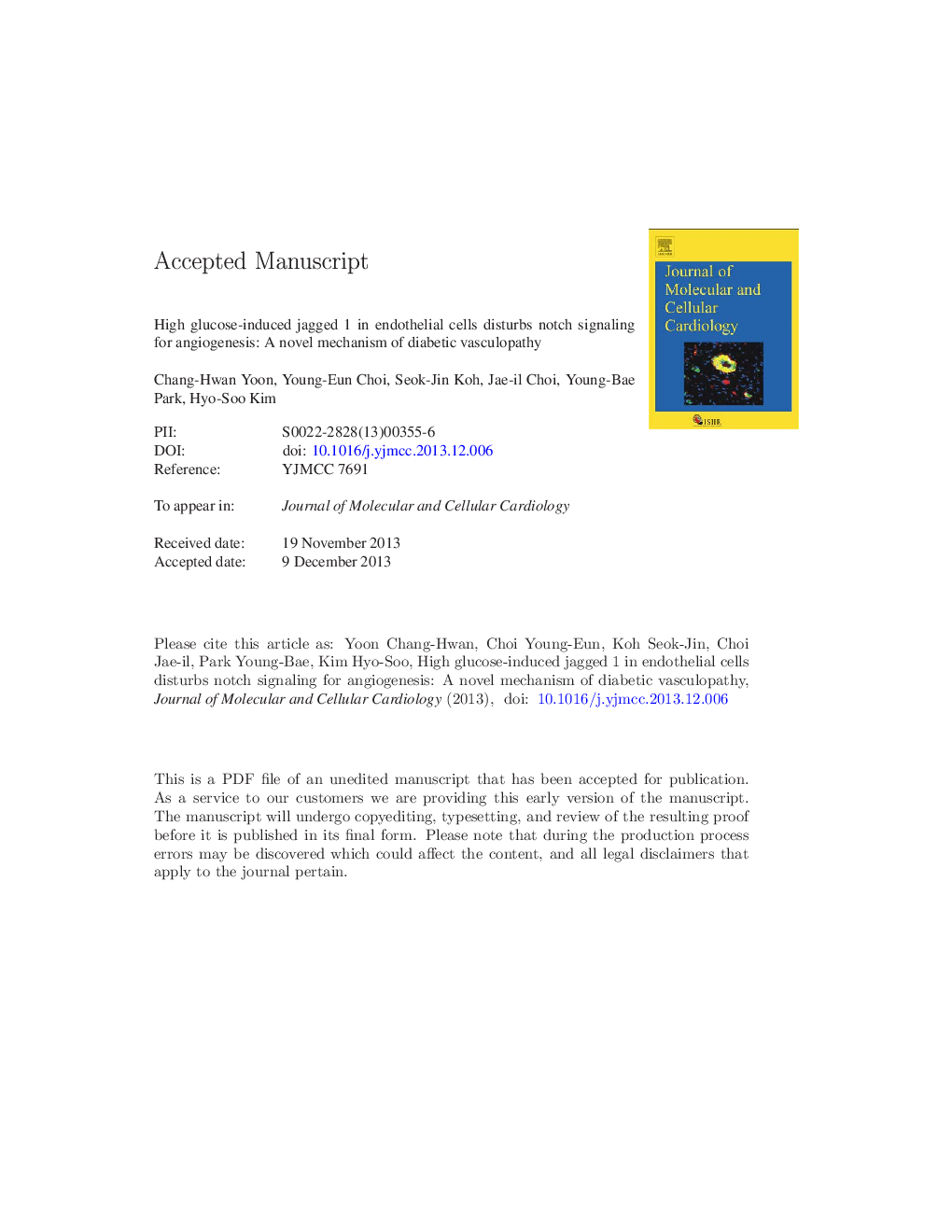| کد مقاله | کد نشریه | سال انتشار | مقاله انگلیسی | نسخه تمام متن |
|---|---|---|---|---|
| 8474936 | 1550436 | 2014 | 34 صفحه PDF | دانلود رایگان |
عنوان انگلیسی مقاله ISI
High glucose-induced jagged 1 in endothelial cells disturbs notch signaling for angiogenesis: A novel mechanism of diabetic vasculopathy
ترجمه فارسی عنوان
غلظت 1 در سلولهای اندوتلیال ناشی از گلوکز بالا موجب تشدید علائم آنژیوژنز می شود: مکانیزم جدیدی از واسکولوپاتی دیابتی
دانلود مقاله + سفارش ترجمه
دانلود مقاله ISI انگلیسی
رایگان برای ایرانیان
کلمات کلیدی
آنژیوژنز، عوارض عروقی دیابت اندوتلیوم، سیگنالینگ سلول،
موضوعات مرتبط
علوم زیستی و بیوفناوری
بیوشیمی، ژنتیک و زیست شناسی مولکولی
بیولوژی سلول
چکیده انگلیسی
Angiogenesis is a multistep process which is orchestrated by intercellular signaling. We developed an in vitro model of human angiogenesis to identify a pathologic angiogenesis and intercellular signaling in high glucose condition. We co-cultivated human endothelial cells (ECs) and smooth muscle cells (SMCs) in a spheroid on an SMC monolayer for 7 days either in high glucose or in control condition. We analyzed vascular growth and expression of notch or its ligands with confocal microscopy. Abnormal angiogenesis by high glucose condition was characterized by (1) increased sprouting and branching (high glucose vs. normal: number of sprouts 20.3 ± 1.5 vs. 13.7 ± 2.9, p = 0.024; number of branching points 7.6 ± 2.5 vs. 2.3 ± 2.1, p = 0.047), (2) decreased vascular diameter (diameter of the tubes 13.4 ± 6.1 μm vs. 19.1 ± 8.8 μm, p = 0.012) and (3) destabilization of the tubes. We identified that high glucose induced jagged 1 and suppressed notch1 in ECs whereas it did not affect Dll4. Constitutive jagged 1 overexpression or inhibition of notch1 in ECs induced abnormal angiogenesis as the high glucose condition did. Endothelial-specific shRNA targeting jagged 1 rescued the aberrant angiogenesis in high glucose condition. High glucose condition induced an abnormal endothelial intercellular signaling leading to aberrant angiogenesis. It is a novel mechanism of diabetic microvasculopathy which can be a therapeutic target beyond glucose control.
ناشر
Database: Elsevier - ScienceDirect (ساینس دایرکت)
Journal: Journal of Molecular and Cellular Cardiology - Volume 69, April 2014, Pages 52-66
Journal: Journal of Molecular and Cellular Cardiology - Volume 69, April 2014, Pages 52-66
نویسندگان
Chang-Hwan Yoon, Young-Eun Choi, Seok-Jin Koh, Jae-il Choi, Young-Bae Park, Hyo-Soo Kim,
